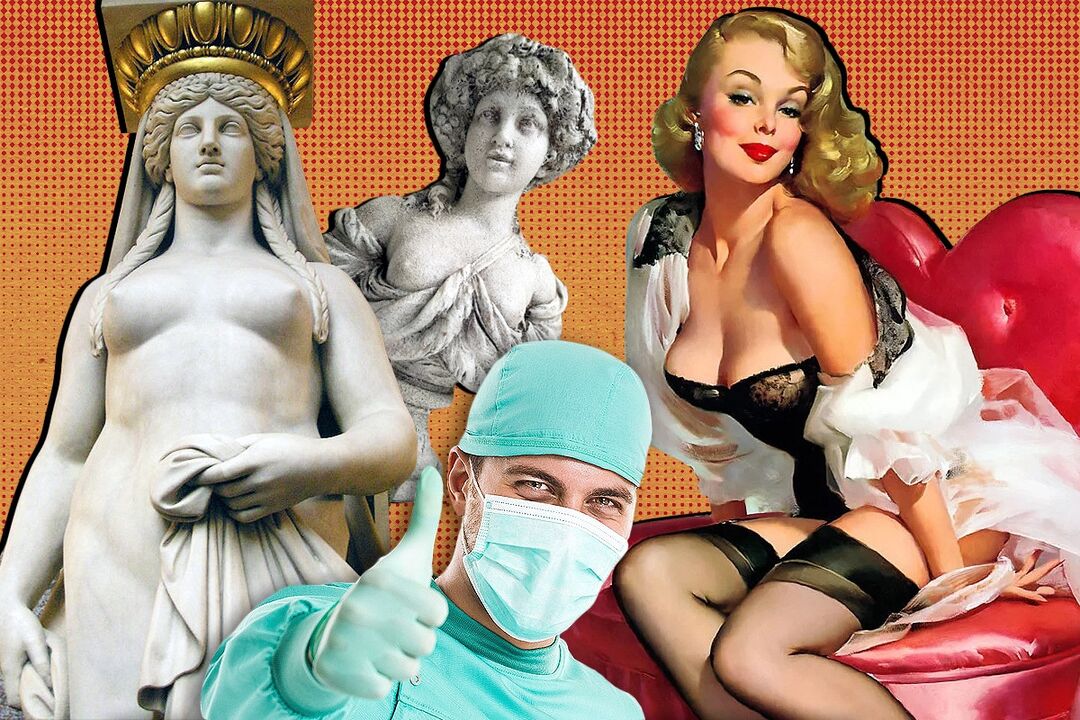
You will not surprise anyone with plastic operations: rhinoplasty, mammoplasty or liposuction have become something ordinary and agreement.Instagram models have been breasting on barter, and their subscribers for years, they accumulate money to make a dream figure in a local surgeon.
But that was not always the case.Even in the middle of the last century, the operation of increasing the mammary glands was not only inaccessible to 90% of the population, but also dangerous.
We have spoken with a plastic surgeon and discovered what has changed in plastic surgery in recent decades.
How it all started
Beautiful female breasts have always caused the pleasure of men and the desire of women, so since ancient times, the girls have been interested in the question of maintaining the shape and increasing the size of their advantages.
Several centuries ago, this was physically impossible, because surgeons did not have the methods or equipment necessary to increase the breast glands.Surgeons at the end of XIX - The first centuries XX tried to give shape to the chest with various injections, but this effect was short.

In the 1940s of the last century, liquid silicone began to be introduced into the chest.Of a particular popularity, this method was in Japanese prostitutes who wanted to attract the military who underwent treatment after injuries.
Beauty requires a sacrifice, and here it was not without them: some time after the operation, women started necrosis of soft tissues, and often such cases ended with the amputation of the chest or death.
The history of silicone implants precisely begins in 1962, when mothers of six children Timmy Jin Lindsay increased the breasts of a single size in two hours.The operation has succeeded and the woman is still alive.Now she is 83 years old.
Since then, the technology of increasing mammary glands using silicone implants has only developed.
Are silicone breasts a curse?
Once the procedure has become more or less available, women wanted not only to change the shape of the chest, but also increase the size.We all remember unsuccessful celebrity operations in the early 2000s, when the inappropriate dimensions spoiled the figures of the girls.

The era of vulgar "silicone valleys" has already passed, and now women are approaching the question of breast plasticism in a more significant way.
The expression "silicone breasts" is a very figurative opposite of the expression "natural breasts".Fortunately, the vast majority of modern patients come to a plastic surgeon not for volume, but for the form, behind the natural shape of the chest.And although the implant material is the same silicone, the safety and quality of the last generations of implants are incomparably higher.
According to statistics, patients aged 27 to 42 after the birth of one or more children who wish to restore the shape of the chest after lactation are most often addressed to the visual surgeon.
The second frequency most frequency of patients categories of patients are young patients aged 18 to 27, who are not satisfied with the original form or size of the breast.
As for reconstructive operations after the amputation of the breast following oncology, medical oncological institutions are engaged in this area in most cases.A modern approach involves simultaneous mastractomy and breast reconstruction.In other words, breast cancer does not always lead to amputation.Surgical operations to eliminate the breast becomes less, because radiotherapy works more effectively.
Cancer because of implants is a myth?
There is always an opinion that the implantation can cause breast cancer, and this fear is not without cause.The fact is that in 1992, doctors suspect that silicone causes autoimmune diseases, for example, rheumatoid arthritis or breast cancer.

For this reason, in many countries, a ban on these operations has been introduced for a long time.But in 2006, the moratorium was abolished because many studies confirmed the safety of silicone prostheses.
To date, it is believed that if the widening surgery has passed without violations, the risk of breast cancer is minimal.
In addition to oncology, many girls are afraid that the implants will deteriorate and should replace them, but plastic surgeons say that it is another myth.
The most ridiculous and funniest myth in our industry is that when you fly on an aircraft, the implants increase in volume and can break out.But this myth has already become a bicycle.Most girls fear the negative consequences for health, for example, the impossibility of breastfeeding or the need to replace implants after the expiration of the expiration date.But modern materials for implants are not subject to changes during life and they do not need to change without special medical indications.
Where is it better to do?
Despite the fact that plastic surgery is a relatively young science, in recent decades in this direction, great success has been made.
As for mammoplasty, it has become one of the most popular plastic surgeries in the world.It has acquired signs of a certain routine on the one hand, on the other hand, the operation of the operation has been permanently improved, new techniques, technologies and materials have appeared.
This made it possible to maximize the risk of possible complications and undesirable consequences, to obtain the most predicted and persistent results, to develop an individual selection algorithm for each particular patient.
Currently, abroad and we have well developed all areas of cosmetic surgery, including mammoplasty.
The variety of interventions, new technologies, modern equipment is widely represented.
And, after 5 to 10 years in plastic surgery, we will see even more development.
The future is already emerging here and now.Cellular technologies, tissue engineering (when tissue complexes are cultivated), 3D printing of organs and tissues is no longer fantastic, but reality.However, the main principle of medicine is "not to harm".And before introducing into a large clinical practice, any new technology goes very far.All studies and tests must meet the most important criteria - safety and efficiency


























